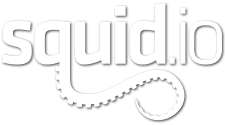Scene Organization and Management
If you haven’t already, we recommend that you check out our guide to scene organization and management. The guide explains the best practices for preparing your objects before submission.
Complex Models
Object Organization should be intuitive without being overwhelming. With complex models that have a lot of pieces to make up the details, it is very easy to over-separate objects. It’s important to focus on the object as a whole- rather than the details- when determining how objects should be separated. Think about how each object would be selected or mentioned conversationally when describing the whole model.
For example (see drop-down image below), each piece of metal on a tank’s tracks should not be its own object; this is too granular of a separation. Tank tracks are referenced as a whole. The same logic is applied to the racks on the sides, or the machine gun on top. If the machine gun was its own model, then the individual parts would be acceptable, but in this case, the machine gun is an accessory part of a larger model.

Even smaller objects could be considered complex, like the camera below (see drop-down image). It is much smaller than a tank, but has several small parts. The letters making up the logo are modeled. Each letter should be an element of the Logo object, not its own object the as shown in the example that has “Too Much Separation.” The casing of the camera can be broken up as well, but it is not necessary to separate each piece of a panel. The acceptable range is between the “Acceptable” example and less than the one that shows “Too Much Separation.”

Both the above examples can be seen with this car model below (see example in drop-down image). There are several ways to break up the car: separation of the bumpers, doors, and other body panels is acceptable. Breaking up each vent in the grill, every letter and piece of the logos, each lug nut, and so on, is too much.
 [/vc_column][/vc_row][vc_row][vc_column width=”1/1″]
[/vc_column][/vc_row][vc_row][vc_column width=”1/1″]Simple Models
Some objects may appear complex, but when it’s completely separated, there is not an overwhelming amount of objects. With simple models, the biggest worry is not having enough separation of the objects, which makes selection difficult. Every model is different, so object amount will vary. It should be fairly obvious when organizing a model whether it’s a simple one or not.
The diving helmet below (see example in drop-down image) has many small parts, but the natural separation of all the parts is very logical. It’s easy to refer to the grating, rivets, wing nuts, glass, etc., by the individual part for this model. It is also acceptable to combine some of these elements (as in the second example pictured) and still have a good amount of visible organization that makes sense. Anything in between the two “Acceptable” examples will work.

Looking at a quiver with arrows (below), the fletchings or perhaps the threading wrapping the arrows may need to be selected individually for coloration. The second “Acceptable” example breaks the object into the major components, but is on the edge of not including enough separation. The arrows are combined so that each arrow is selectable as a whole, and the same goes for the straps and quiver. Any less will make selection difficult and indistinguishable. With objects like these, it’s better to have more than less.

A time bomb (below) can be broken up in many ways. However, if completely separated, there is still only a small amount of objects. The same can be seen with the cow skull below the bomb.

 [/vc_column][/vc_row]
[/vc_column][/vc_row]
